The Canon nFD 3.5/135 is a small, light and very affordable tele lens. Is the 40+ years old lens it still a contender in a world full of super fast and large 135 mm lenses?
Sample images
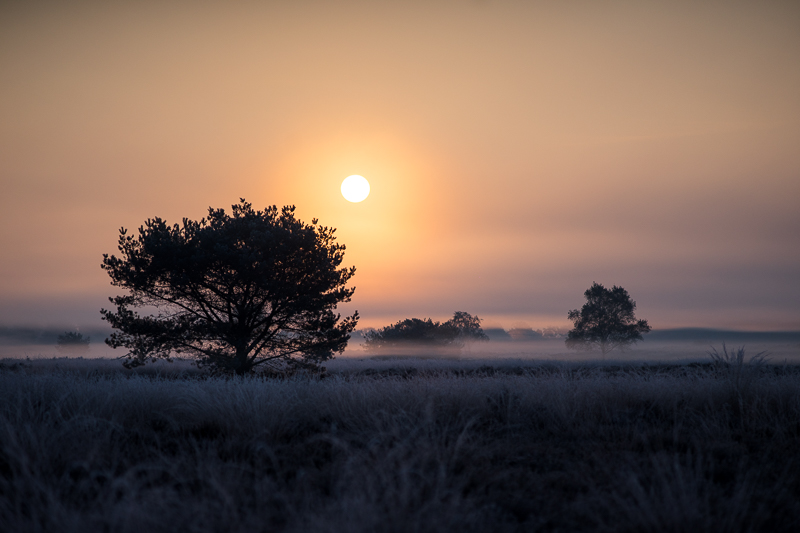
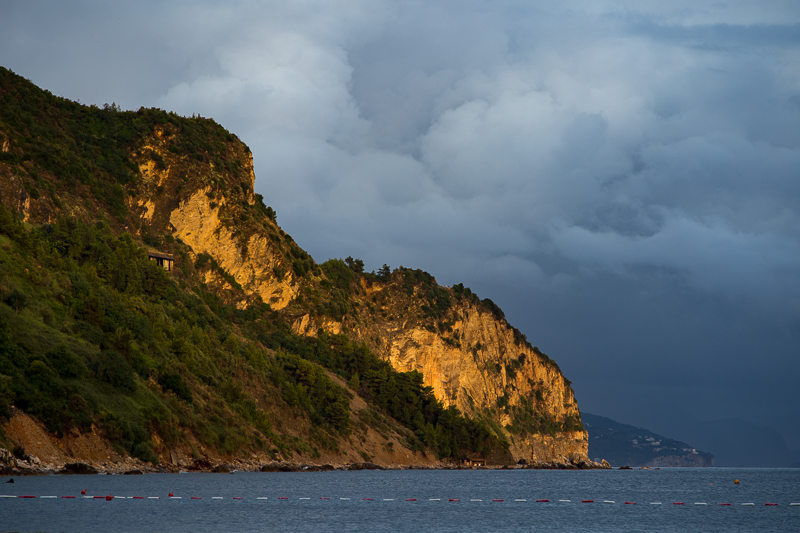
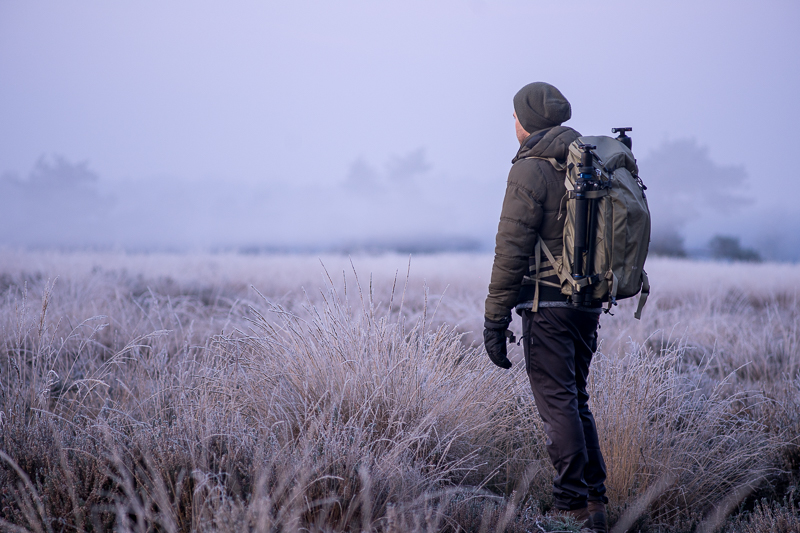
Contents
Contents
Specifications
| Category | Specification |
| Diameter | 63 mm |
| Length | 85 mm |
| Filter diameter | 52 mm |
| Weight (ex. Adapter) | 325 g |
| Aperture | f/3.5-32 |
| Minimal focus distance | 1.3 m |
| Elements/groups | 4/4 |
| Aperture blades | 6 |
The Canon nFD 3.5/135 can be found in good condition
for +/- 50 €/$
Ebay.com* | Ebay.de*
(*Affiliate links, if you buy something via this link I will earn a small commission and it doen’t cost you anything extra ? )
Versions and history
There are two versions major of the Canon 135mm f/3.5. The older FD which was on the market from 1970 to 1978 version and the new FD version introduced in 1979.
Of the older FD model there are three different versions. The first version of these was introduced in 1970 and consists of 4 elements in 3 groups and 8 aperture blades. The second version was introduced in 1973 and has the same optical design but is slightly lighter. It still has 8 aperture blades. The third version that consists of 4 elements in 4 groups is significantly lighter and has only 6 aperture blades. This latest version was introduced in 1976. All three FD versions have the simpler S.C. coating
The newFD version introduced in 1979 is quite a bit lighter than its predecessors and it is a 4 elements in 4 groups design. It has 6 aperture blades and the more advanced S.S.C. coating. More information can be found here and here.
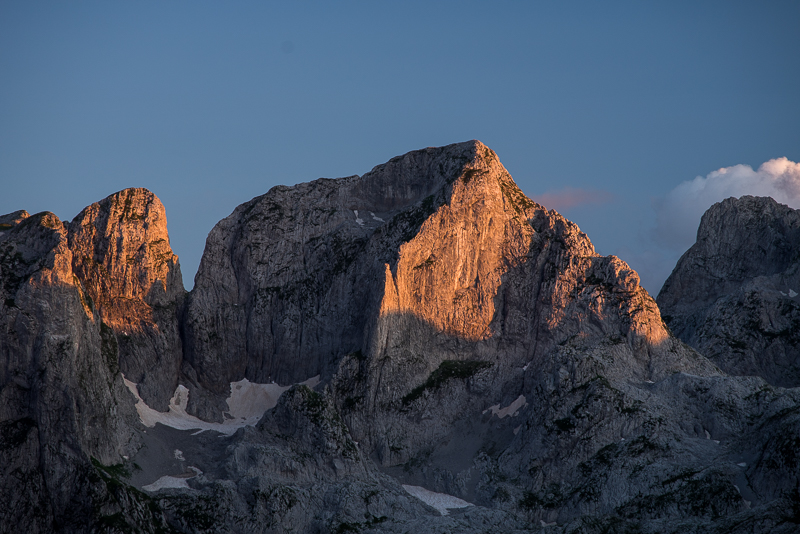
Build quality and handling
Compared to cheaper modern lenses made mostly from lower grade plastics build quality is very good. Compared to the very best manual lenses build quality is less impressive. Nevertheless the lens feels much more solid than the newFD 50 mm f/1.8.
The focus ring is made of metal with a plastic grip, the aperture ring is made from high quality plastics. The lens barrel is also made from metal. All markings are engraved and filled with paint. The black finish seems to be scratch resistant, my sample looks like new despite being over 40-years-old.
The focus ring has a pleasant resistance and turns ~220° from MFD to infinity. The aperture nicely clicks with a 1/3 stop click stop between f/3.5 and f/4 and 1/2 stop click stops between f/4 and half stops between f/4-f/32.
The built in hood sits very tight and is covered with felt at the inside. The lens feels well balanced on my a7II but maybe a tad to long, especially when fully extended. In combination with an L-bracket handling is great though.
The front barrel of the lens does not rotate, this makes using a polarizer straightforward.
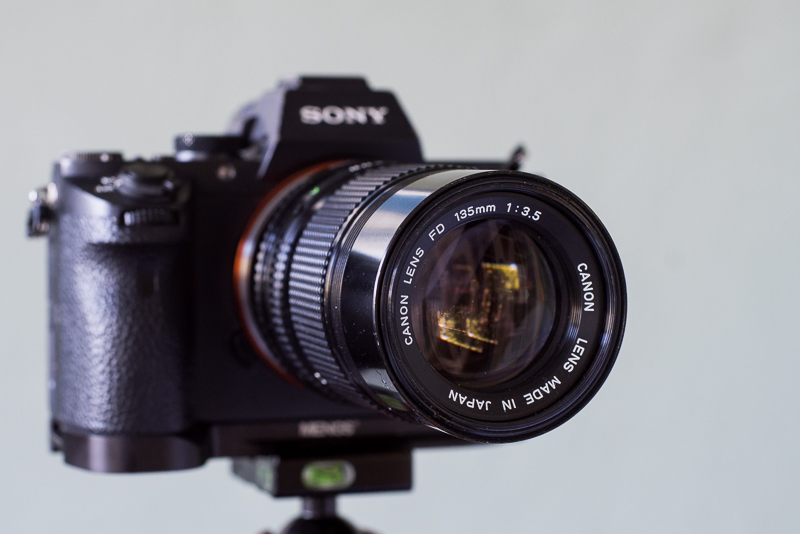
Vignetting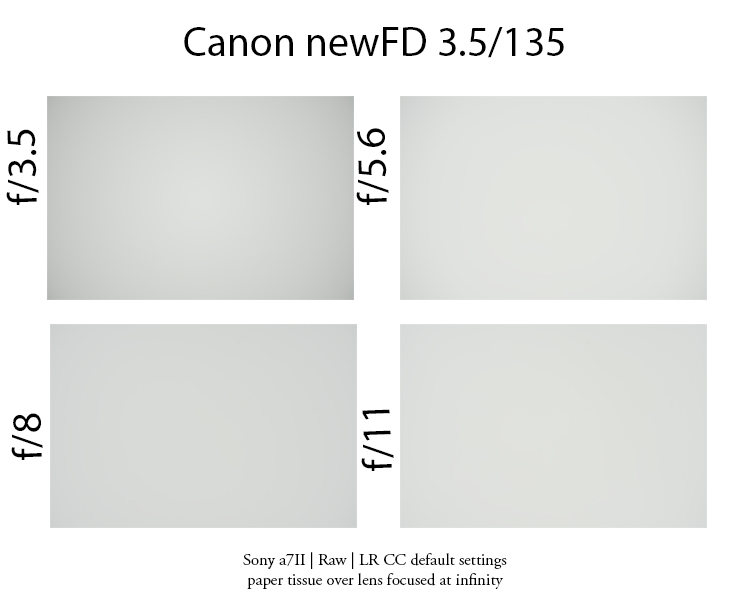
Wide open vignetting is roughly one stop, at f/ 5.6 it is 0.4 stop and stopped down further only 0.2 stop. Wide open you can note the vignetting in some situations, and you might want to correct it but overall these are low figures.
Sharpness
In the chart above focus shift is not taken into account, refocusing for the center improves center sharpness a tiny bit and significantly improves corner sharpness. See below:
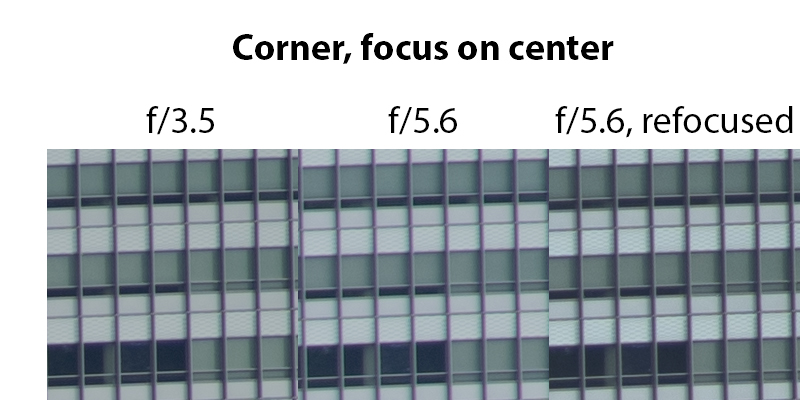
f/3.5: Wide open the center already looks very good, as does the midframe. The corners look very good too.
f/5.6: Across the frame sharpness is very good to excellent now.
f/8: Across the frame sharpness is very good.
f/11: The whole image is softer due to diffraction.
The Canon newFD 3.5/135 is a very sharp lens. I would not hesitate to use this lens wide open, however I often stop down to f/5.6 to reduce aberrations and improve contrast a bit. (micro-)contrast is not very high in comparison with the best modern lenses, but this can be fixed in post quite easily.
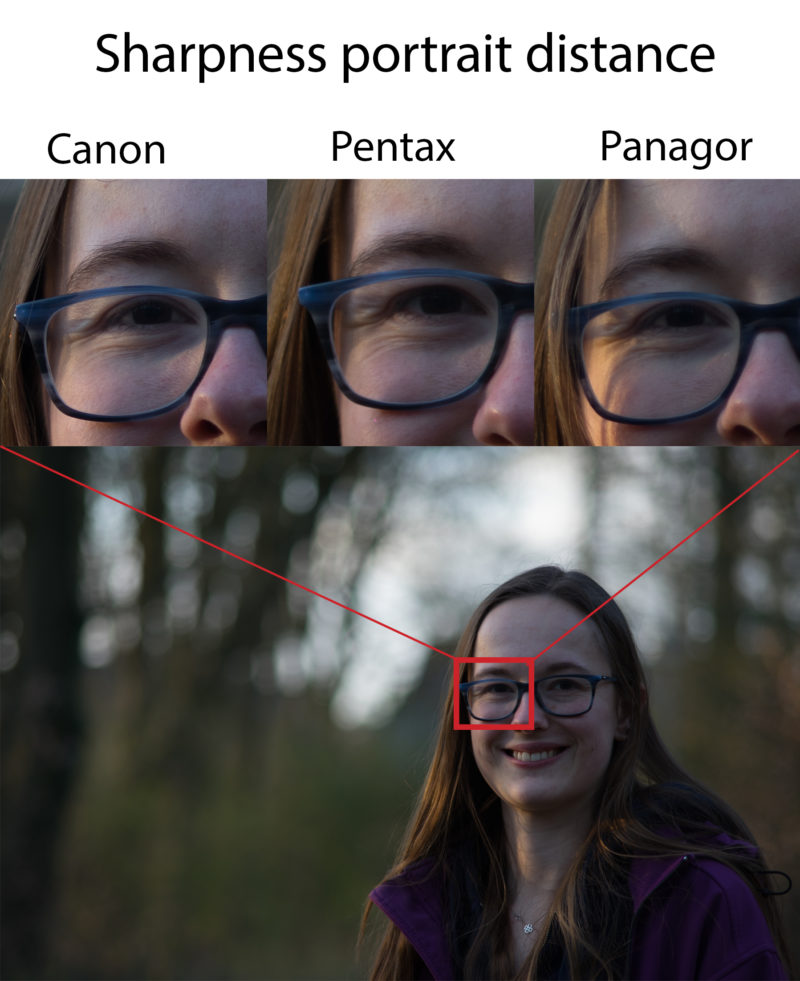
Also near mfd and at typical portrait distances the Canon newFD 3.5/135 is very sharp across the frame from wide open. Lenses like the Pentax-M 3.5/135 are significantly less sharp at similar distances.
Chromatic aberrations
Wide open some longitudinal chromatic aberrations are visible, luckily it isn’t very obtrusive and still correctable in post.
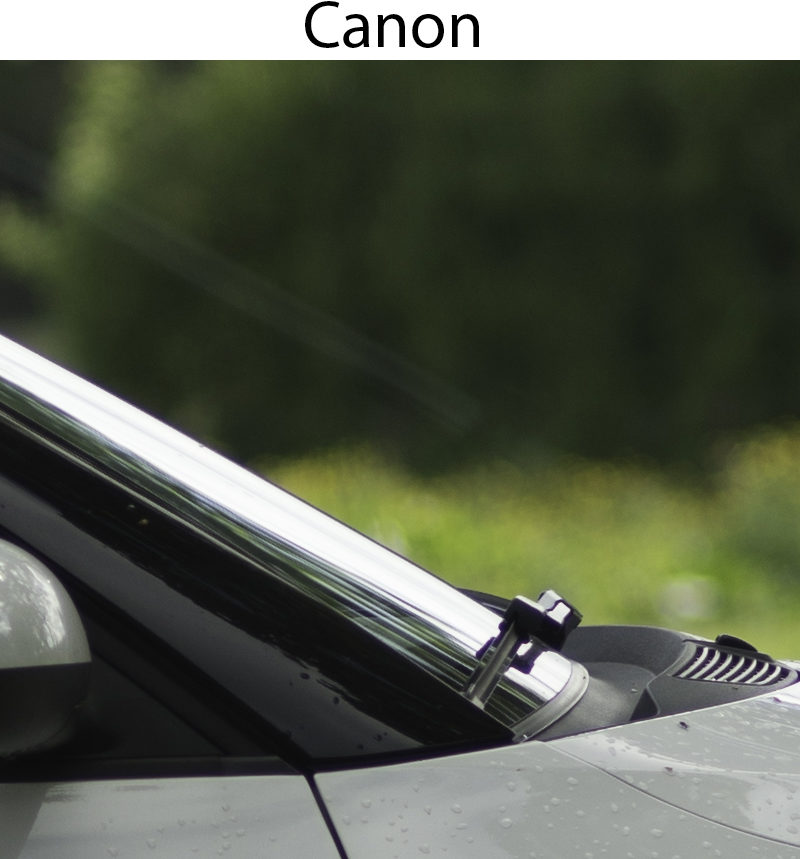
Stopped down there is a moderate amount of lateral CA visible. Luckily this can be fixed in post easily. (Focus wasn’t optimal for the test shot)
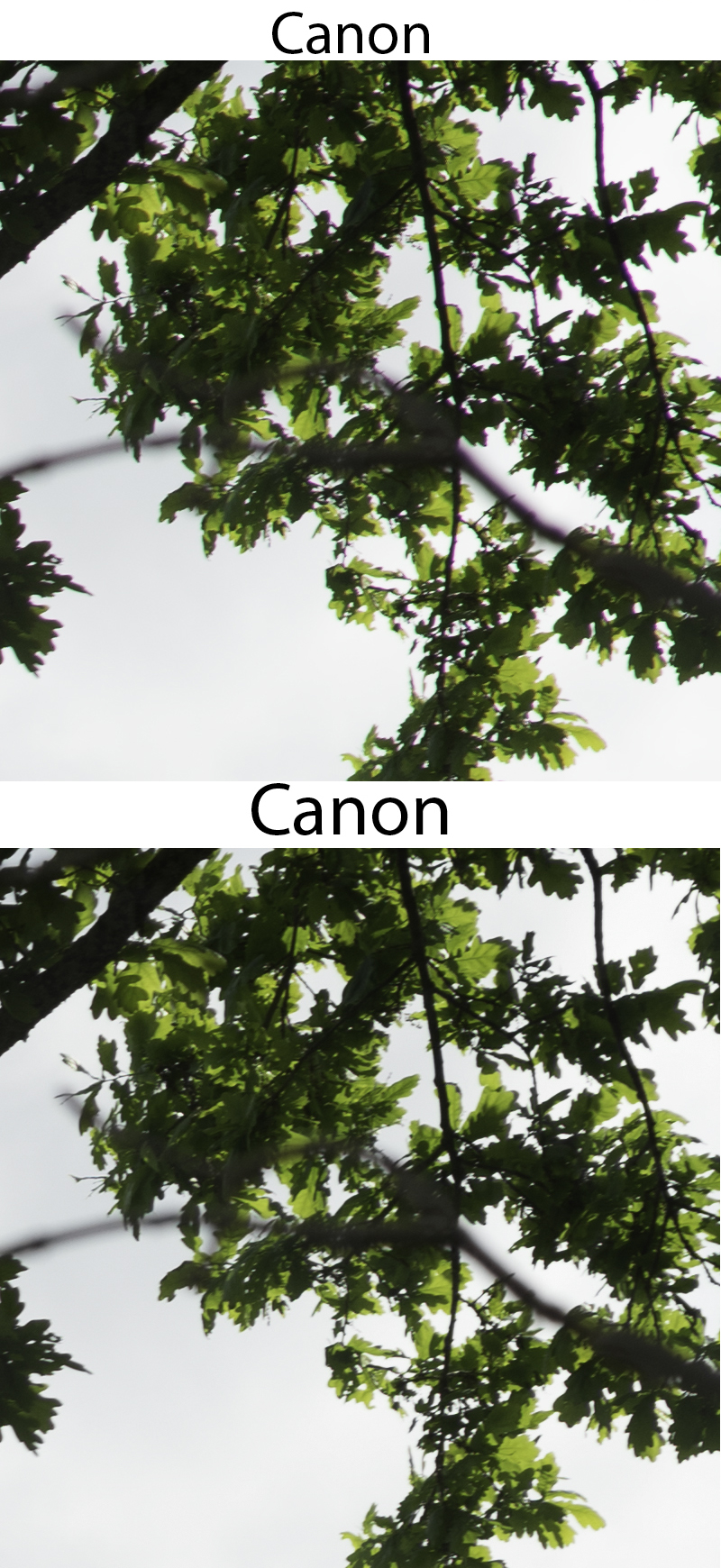
Distortion
There is a tiny bit bit of barrel distortion, but this is not relevant for almost very application and otherwise easily corrected in post.
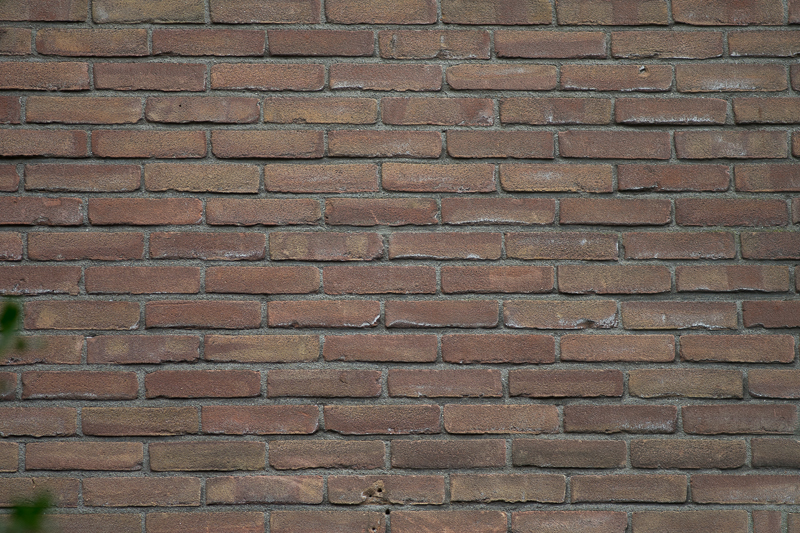
Bokeh
The bokeh department is where this lens stands out to me. Unlike what I have observed with many similar 135 mm lenses from the same era, bokeh is very smooth with barely any bokeh fringing. Even very difficult backgrounds are rendered smoothly without outlining. In the corners mild cat’s eyes can be observed but not in the extend it becomes obtrusive.
For full body portraits with objects in the background close to the subject a maximal aperture of f/3.5 is a bit lacking. Nevertheless, the background is calm, and I often found subject isolation to be sufficient.
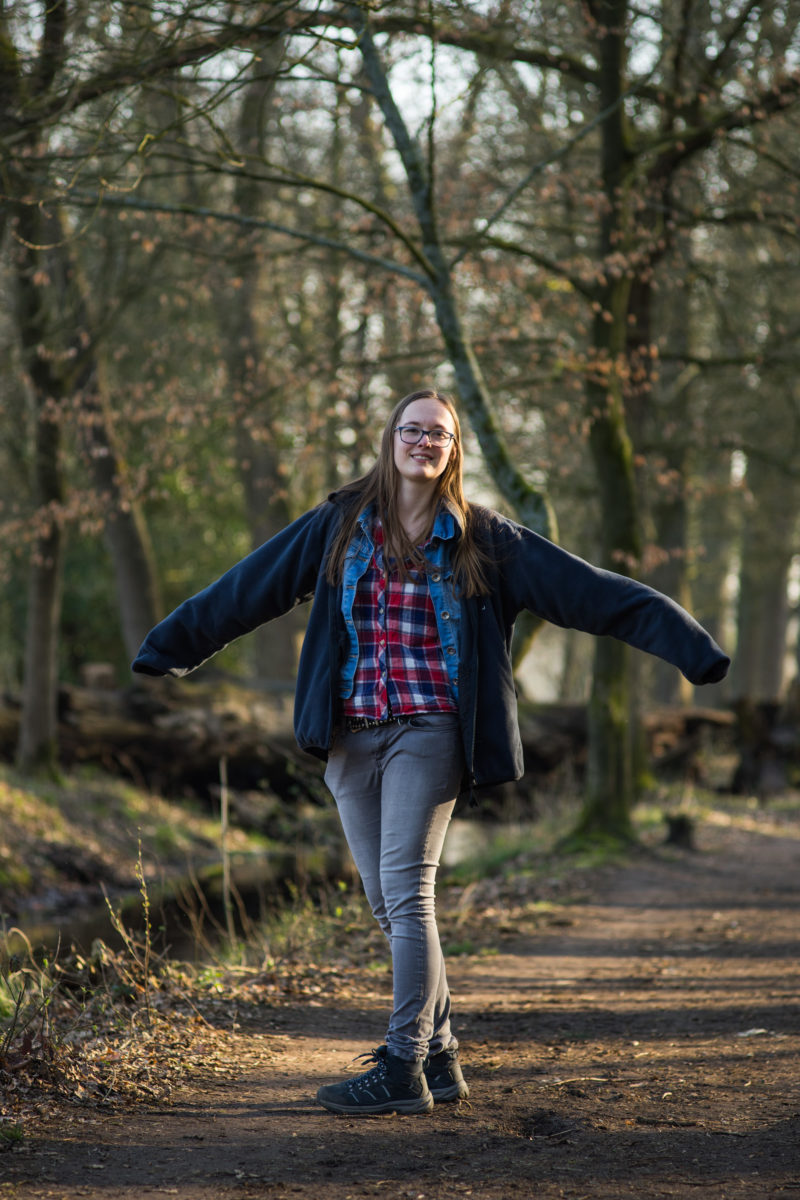
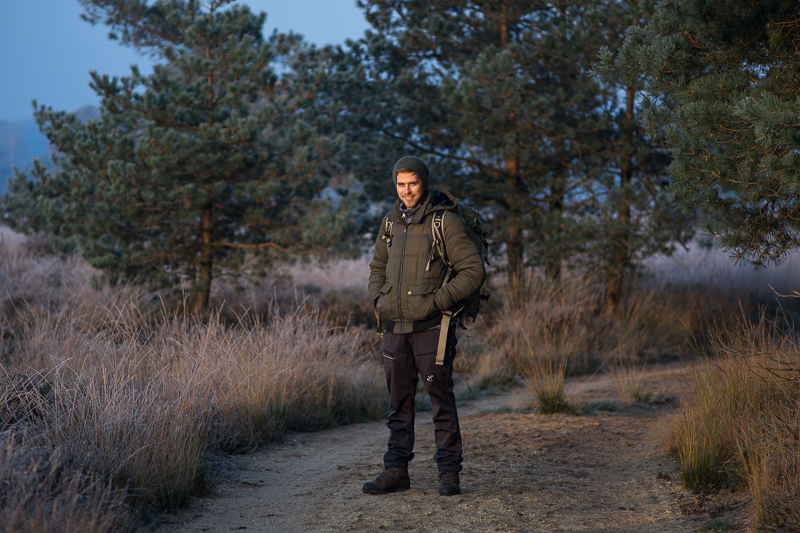
With objects in the background a bit further away I really like the rendering of this lens. Because of the slow aperture there isn’t too much blur, which gives the viewer more context. Because the quality of the bokeh is very good the background does not get distracting.
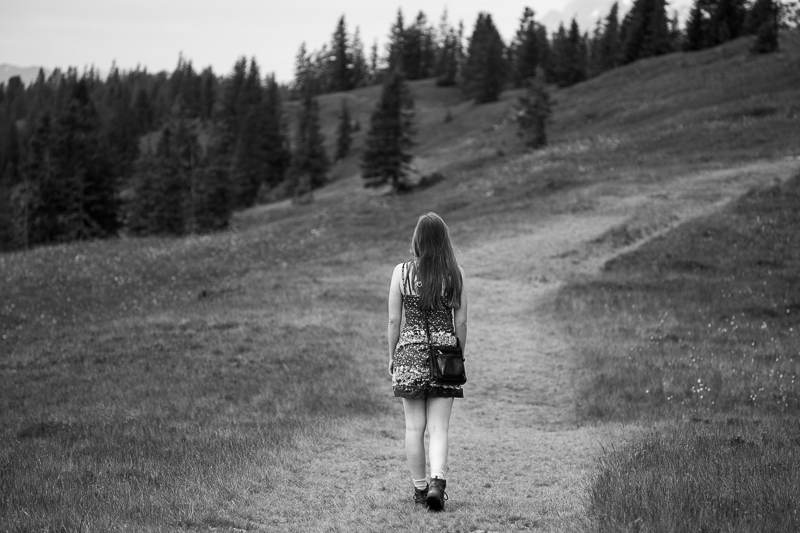
For half body portraits and head shots f/3.5 was always sufficient for me. At these distances bokeh is great too, even with very demanding backgrounds like in the picture below.
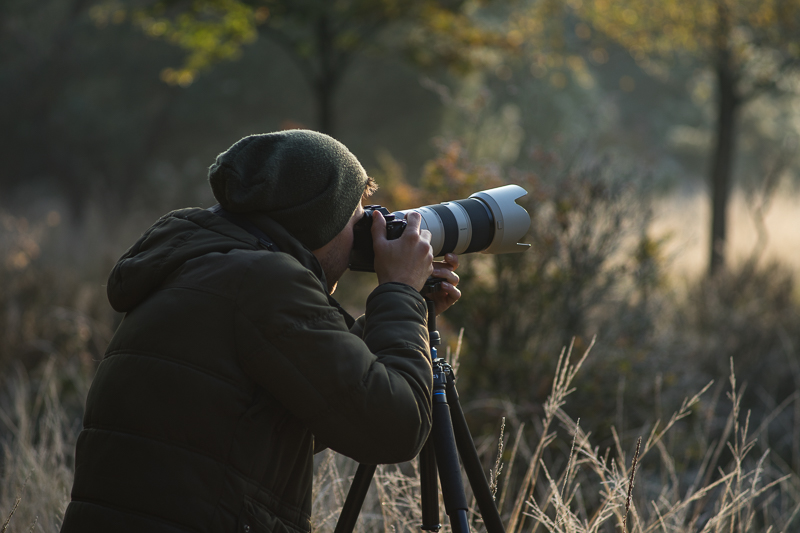
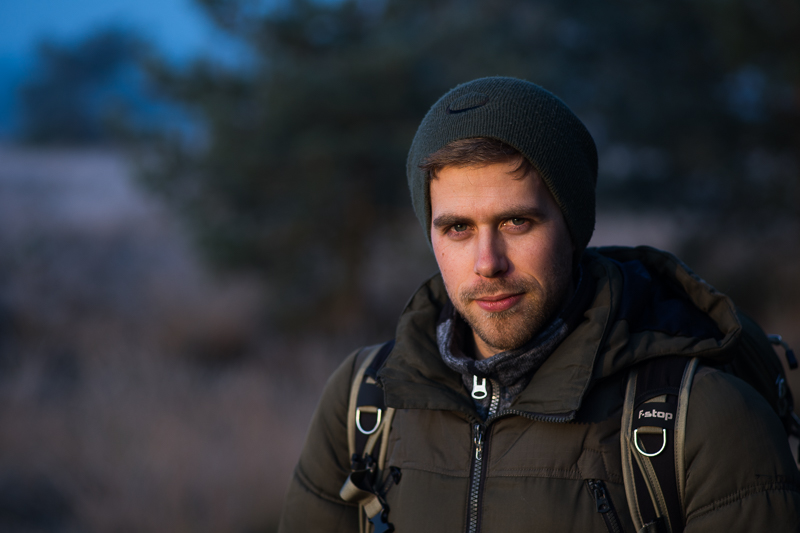
Near MFD bokeh is very smooth, even with difficult backgrounds.
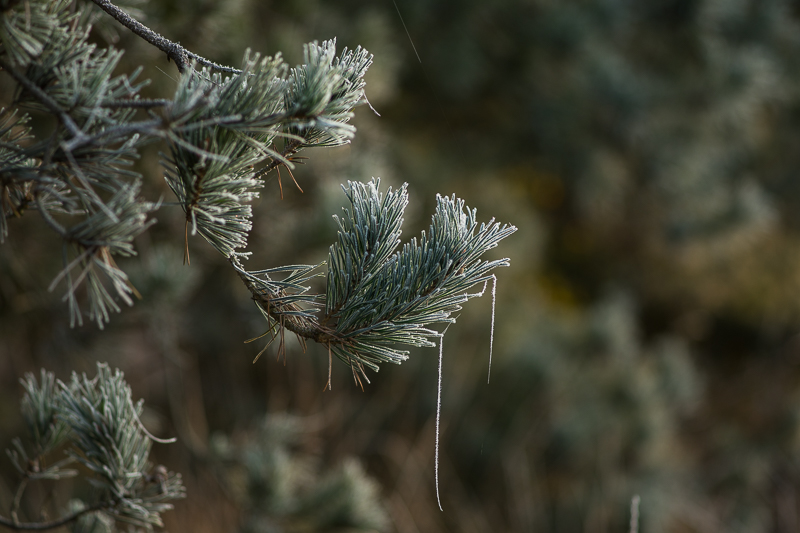
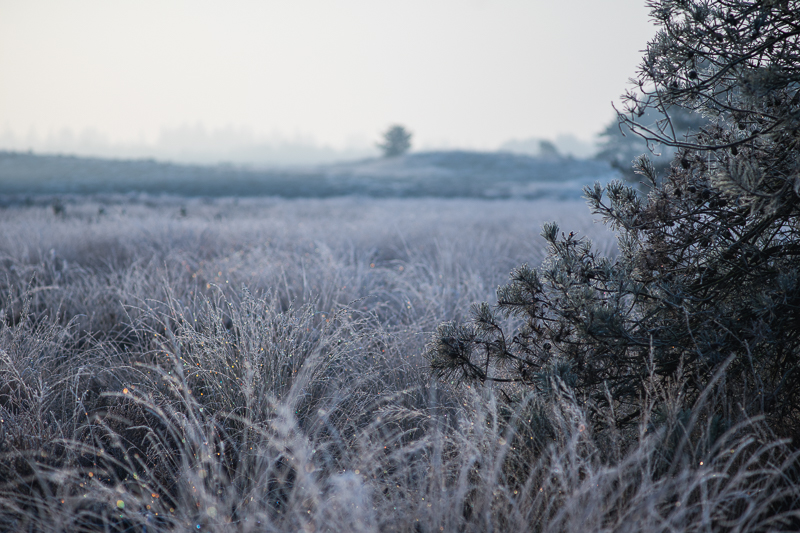
Flare resistance
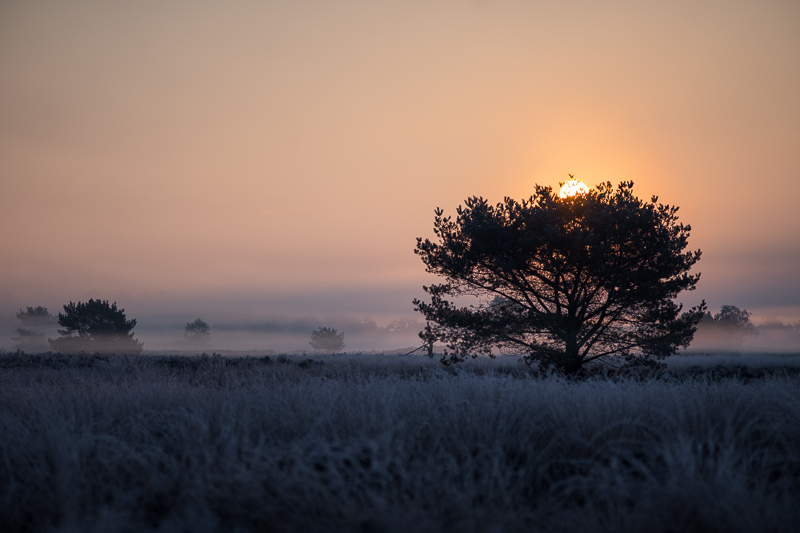
Flare resistance is actually pretty good, much better than one would expect from a vintage tele lens. With a bright light source in the frame one can observe a small ghost, but recomposing a little bit resolves this problem easily. Contrast stays on a high level, even with the sun in the frame. With the sun just outside the frame one will observe some veiling flare, but shading with my hand always was sufficient to get rid of it.
If you use a cheaper adapter, make sure to flock it as described in this article. Before I flocked mine I had severe flare issues with appeared to be adapter reflections.
Sunstars
With only 6 aperture blades sunstars ain’t great, unfortunately.
Alternatives
Olumpus OM 3.5/135
The Oly is a bit smaller and lighter and more pleasant to handle. Flare resistance is less good though. Bokeh is busier with more bokeh fringing, and infinity sharpness is significantly less good. Sharpness at closer distances is very similar though, with maybe a touch higher contrast.
Pentax-M 3.5/135
Smaller, lighter and nicer to handle. Sharpness is significantly worse at all distances and bokeh is very busy. Contrast is on a higher level though.
Canon nFD 2.8/135
The 3.5/135 its bigger brother shows a very similar performance but is also a bit bigger and heavier. If you really need the speed this could be a nice alternative. If your focus is mainly on landscape photography the 3.5/135 is the more attractive option as flare resistance is a bit better and it is lighter.
Leica APO Telyt-M 3.4/135
The Leica is very expensive, used prices start at 20x the price of the nFD 3.5/135. Bokeh is less smooth, but built quality is on a higher level. I would not know a single reason to get this one over the Canon unless money is not a restriction at all.
Jupiter-11 4/135
The price is quite similar but the Canon offers the better performance is almost any regard. The Jupiter-11 is much lighter though.
Leica 4/135 Tele-Elmar
Better corrected for LaCA, higher contrast and better build quality. The Leica is also heavier and costs about four times as much as the Canon nFD 3.5/135.
Sony GM 1.8/135
The Sony 1.8/135 offers AF, performs better in almost every regard but is much more expensive and much larger/heavier. If you are looking for an AF 135 mm portrait lens without any compromises you should consider this one.
Voigtländer 2.5/110 Macro Apo Lanthar
A great manual lens that offers 1:1 magnification. Its better in almost every regard but also much more expensive and heavier. If you like great manual lenses this is the best money can buy for E mount.
Zeiss Batis APO Sonnar 2.8/135
The modern interpretation of a 2.8/135. The Batis is, like the other modern options, a better performer in almost every regard and offers AF. It is heavier though, but I would not call it a heavy lens.
Conclusion
| Good | Average | Not good |
| -Sharpness -Bokeh -Flare resistance -Handling -Build quality -Price-Size/weight |
-CA correction -Blur potential -Contrast |
–Sunstars |
The Canon nFD 3.5/135 is a cheap but very capable tele lens.
It accompanied me on my trip through the Balkans and Alps last summer and did not disappoint me. I took some of my favorite images of this trip with this lens.
The Canon 3.5/135 still is my main landscape tele, and so far all other vintage 135 mm lenses performed significantly worse in most regards.
It still is my longest lens for serious photography and I don’t see that change in the near future. Modern (and faster) 135 mm options are all much more expensive and significantly heavier, as are zoom lenses, and are therefore not an option for me.
The Canon nFD 3.5/135 is therefore a very attractive option for whoever wants a sharp tele lens for landscape photography and traveling, but values great image quality. If you have to work with a tight budget this lens would be a great longer option in your kit.
Most sample images can be found in full resolution in this Flickr albumn.
The Canon nFD 3.5/135 can be found in good condition
for +/- 50 €/$
Ebay.com* | Ebay.de*
(*Affiliate links, if you buy something via this link I will earn a small commission and it dosen’t cost you anything extra ? )
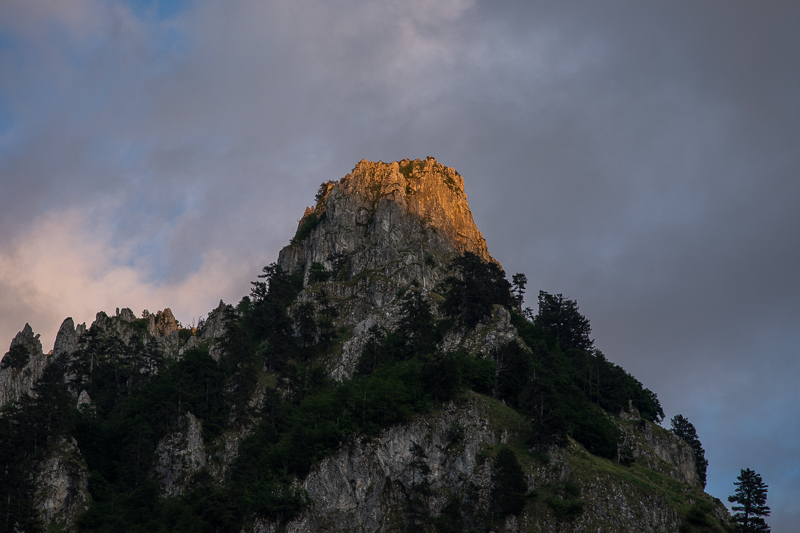
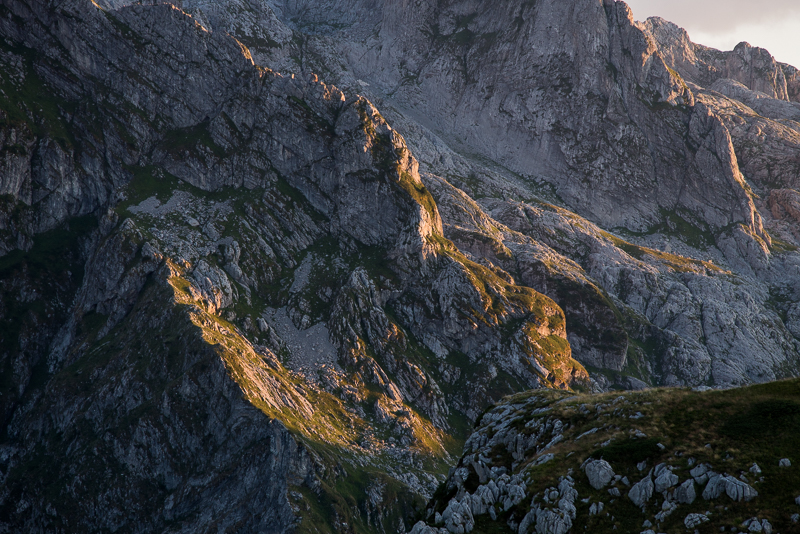
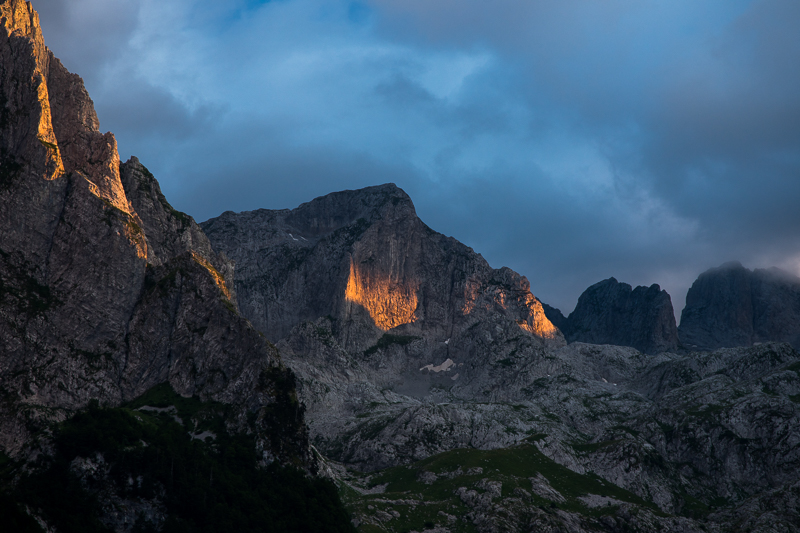
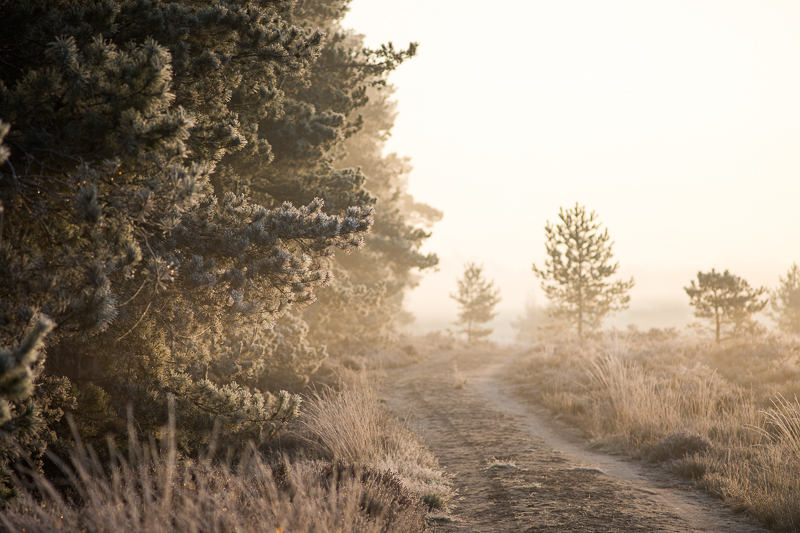
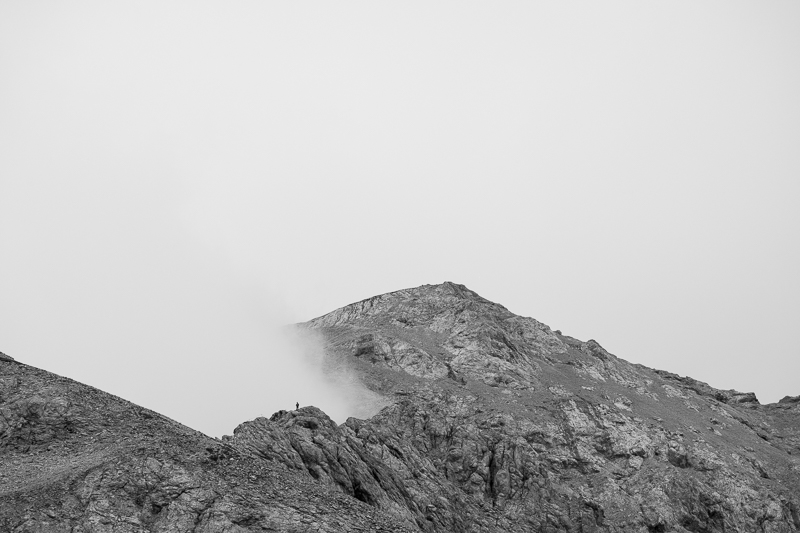
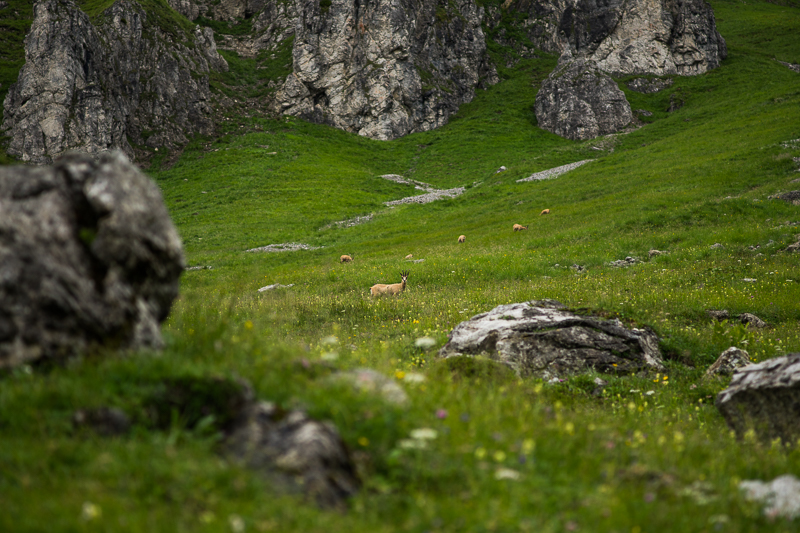
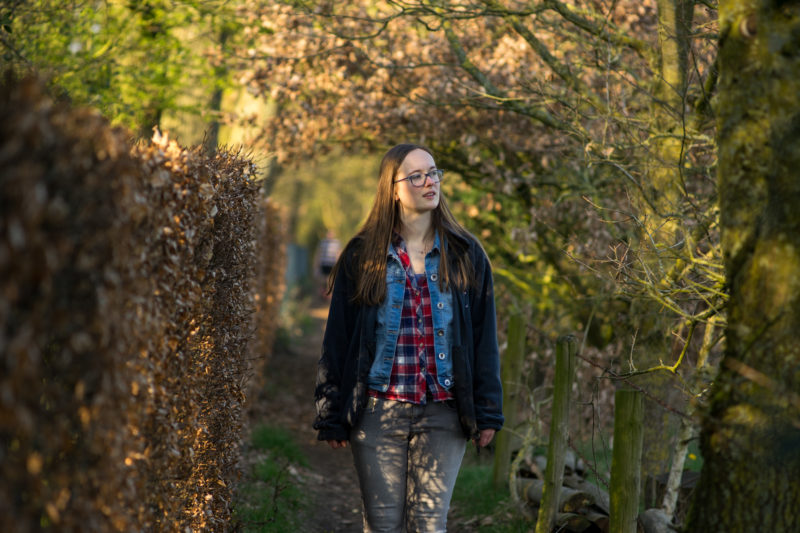
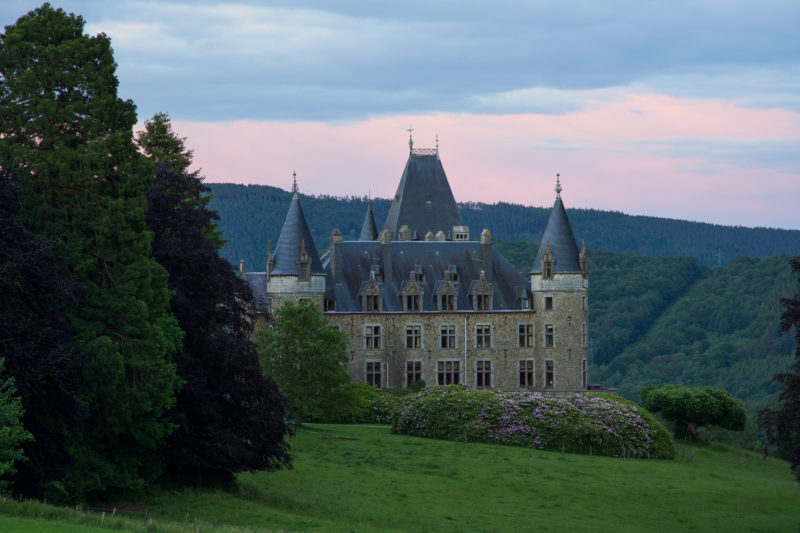
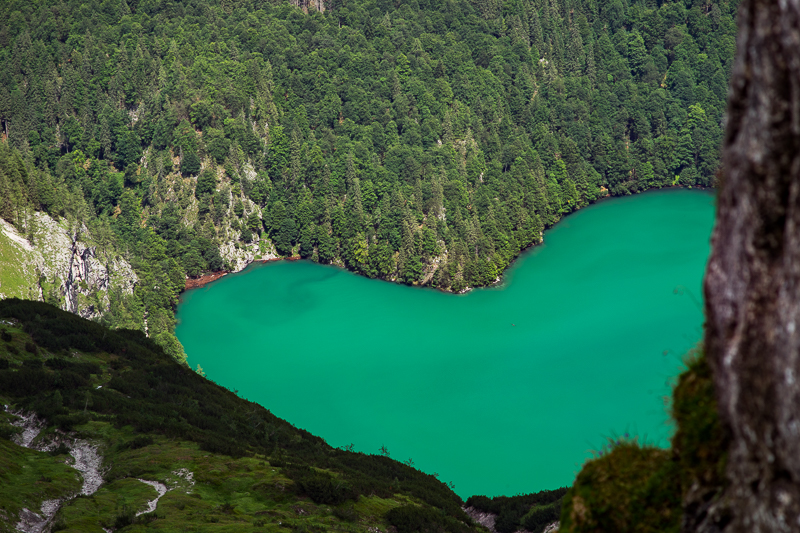
Further reading
- 135MM LEGACY SHOOT OUT: SMC PENTAX-M F/3.5 VS CANON NFD F/3.5 VS. PANAGOR F/2.8
- THE GUIDE TO CANON FD LENSES ON THE SONY A7 SERIES
- AFFORDABLE MANUAL LENSES FOR THE SONY ALPHA 7,7R,7II,7RII AND 7S
- BEST SONY FE LANDSCAPE LENSES FOR THE POOR STUDENT
- BEGINNER’S GUIDE TO MANUAL LENSES ON THE SONY A7
This site contains affiliate links. If you make a purchase using any of the links marked as affiliate links, I may receive a small commission at no additional cost to you. This helps support the creation of future content.
JuriaanM
Latest posts by JuriaanM (see all)
- Review: Sigma 85mm f/1.4 DG DN Art - January 8, 2022
- A beginners guide to landscape astro photography - March 11, 2021
- Canon newFD 50mm f/1.8: A review - January 4, 2021
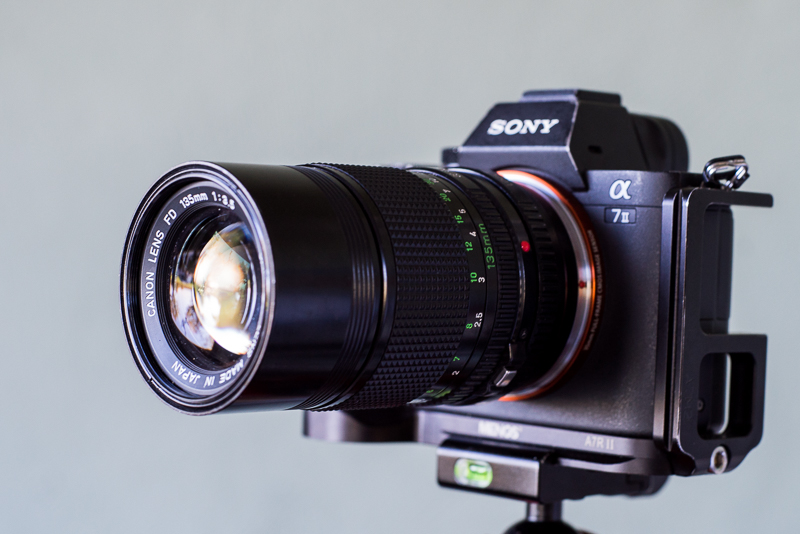
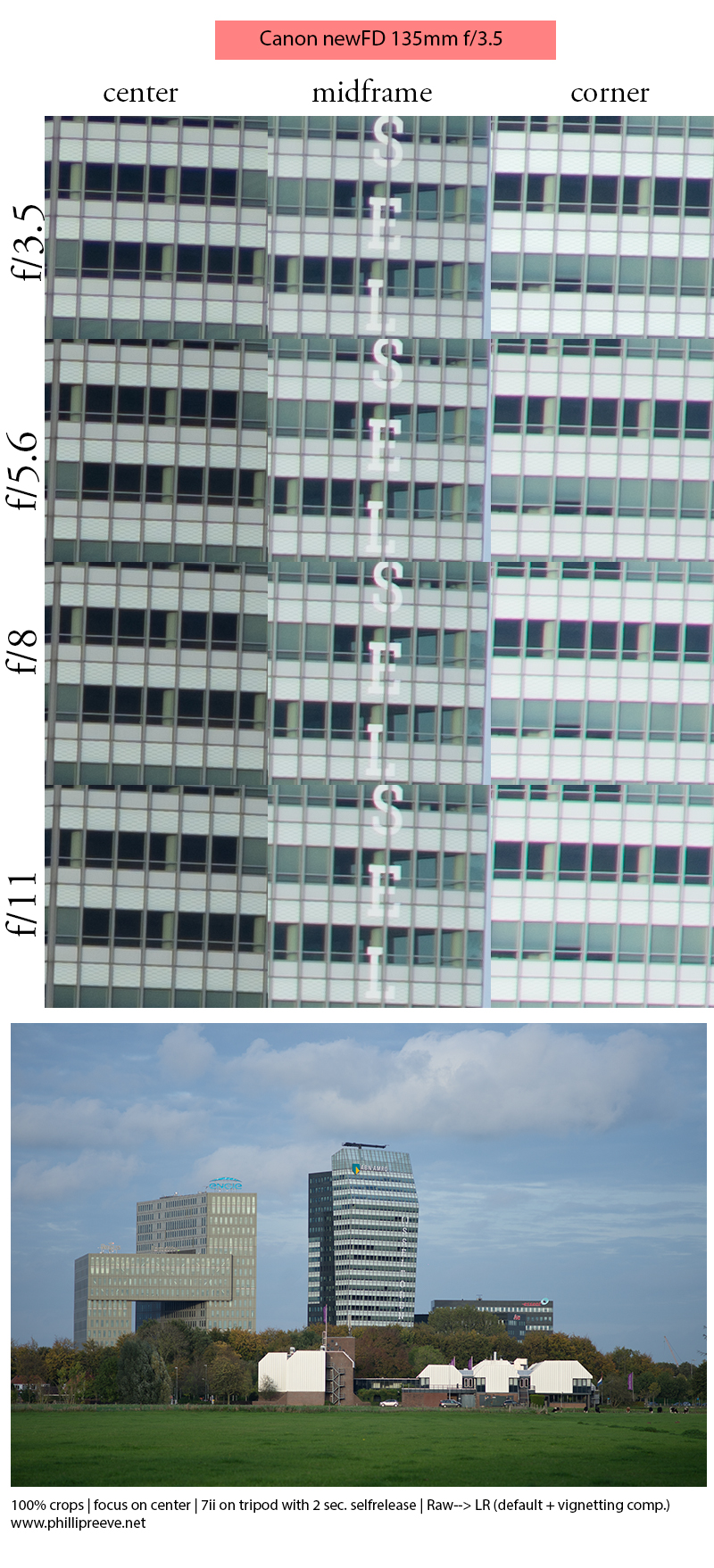
thanks for the review juriaan, it sureley is a stunning lens considering its age/prictag/weight/size.
its great to see that widopen performance for portraits is very good in terms of bokeh/separation.
i’d rather use a 135mm lens that is lightweight/sharp and has good bokeh but is only semi-fast than a 1.8/135mm that is heavy/expensive.
The amount of separation a 3.5/135mm gives (on FF) is definetly sufficient for my taste/usecases.
Recently tamron/sigma introduced semi-fast f2.8 AF-lenses for emount that are very small and are good performers (as far as we know). I hope this is a trend that sticks and we can see more modern cheap/light/semi-fast primes, especially teles in the 85-135mm range that are great performers and cheap/lightweight/small.
Yeah I like the concept of small and good f/2.8 lenses too. It would be great to see a Loxia 3.5/135 or 2.8/135 in the future.
Yes I would certainly consider buying a 135 mm Loxia.
hm. i’d prefer AF in 135mm, so the roumors about a new loxia lens, i hope are about a UWA <18mm. Who needs AF in such a lens anyway…
Just looking for a compact telephoto lens for landscape in the 70-150mm range. I had Minolta md 75-150/4 and Canon 70-150mm/4.5 but they were “curves” This compact 135/3. 5 looks / shows a good result.
What kind of adapter did you use. Because i have a complete set of Canon lenses for the F1. Marvelous camera.
Thanks
Mathew
Hi Mathew,
I use a simple K&F adapter. These work fine as long as you add some light absorbing felt like in this article: https://phillipreeve.net/blog/tuning-adapters-infinity-focus-reflections/
Juriaan
>simple K&F adapter
I see these recommended all the time, but I don’t get a fascination with them.
The one I’ve got my hands on (MD-FX) weighted an outrageous 108g.
It’s just 20g shy of Viltrox focal reducer, heavier than any of my tilt adapters, just as heavy as helicoid adapters (lighter than some, heavier than others).
I wonder, how much K&F FD-E tips the scale?
The ones I use for FD lenses are 65g a piece.
the K&F for MD-NEX is quite heavy at 128g compared to the FD-NEX at 91g.
These are good adapters for the money (u might want to flock them tho…).
>the K&F for MD-NEX is quite heavy at 128g compared to the FD-NEX at 91g
This confirms the trend of K&F being very heavy.
My preferred MD-E adapter is on the heavy side at 82g, still very far from K&F 128g.
K&F do look nice, I’ll give them that.
In our experience K&F adapters offer acceptable tolerances and decent build quality for an affordable price. We have had much less success with other more affordable brands.
Personally I also use lighter Novoflex adapters but I never considered weight an important factor when choosing an adapters. More on adapters in this article.
Of course we have only used a couple of dozen different adapters and there might be other affordable adapters which are lighter and do the job as well, we are always open for suggestions.
I have two K&F FD-NEX adapters, the older one is from 2017 (I think) and the other I bought a couple of months ago. There is a difference in length: the old one is a bit short, for example with a 35mm lens the actual focus distance is near the “8” mark in the depth of field scale, but with the new one it is very exactly at the focus mark. Also another K&F adapter (C/Y-NEX) that I bought May this year is very exact in length. With my rather limited experience, most adapters tend to be slightly short (maybe to ensure infinity focus in all cases), but it seems K&F has decided to go to very exact measurements. I think it is good, at least for floating element lenses, which work as intended only when the flange distance is correct.
I would recommend the Fotasy FD-FE adapter, over the K&F. I have both, and I like the way the lock ring feels (more secure) on the Fotasy. Also, the Fotasy is half-the price of the K&F.
thanks for the review juriaan
Wat about the Nikkor 135mm f/3.5 ?
It probably is a good performer too. But unfortunately vintage Nikon lenses are pretty expensive in comparison to those of other brands, therefore I’m not very tempted to buy them 😉
A bit late to the party, but the Nikkor Ai 135mm f/3.5 is truly awesome. It is sharper and more contrasty than the Nikkor ai(s) 135mm f/2.8.
It has great bokeh. The results of the Canon look really good as well. I ordered one and will compare them. I’ll post the results on forum.mflenses.com
In general, I’d say the breed of 135f3.5 legacy lenses offers way more than prices may suggest 🙂 I’ve had ordinary FD version of the canon (breach-lock) with aperture stuck wide open, and was quite impressed with it, although in my case CA worried me more than your pics would suggest. In the end, I got rid of it in favour of Hexanon-AR 135 3.5 which I found had better performance overall (my copies), could be stopped down, and looks absolutely fabulous on A7 🙂 Later, in addition, I also acquired Minolta AF 135 2.8, which is absolutely fantastic “pocket rocket” too, but is AF, so tends to be used in different circumstances. My third 135 is the Jupiter 11, and have to I disagree with the conclusion above: J11 is absolutely fabulous in good light: both for portraits wo, and for landscape at f8+, where it shows comparable sharpness and less CA than canon while weighting almost nothing which makes it a unique travel lens option 🙂
Isn’t the bang for the buck lens at 135mm the samyang / rokinon135 f2?
I ordered from Japan this 135mm. it Is possible to take a very cheap Minolta md-III 135/3. 5. Any thoughts on Minolta ?
I haven’t had an FDn 135/3.5, but I do have an MD-III 135/3.5.
It’s not a bad lens, but it’s not a great one either.
I might be a spoiled GAS brat, but I would say it lacks anything special that would force me to keep it.
Here is my post (in Russian) on this lens with some pics: https://bit.ly/2NUE7kT
I think featured in this article FDn 135/3.5 looks better to me, although it’s 50g heavier.
Also, If you aren’t into landscapes and you can live with poor flare resistance and weight, Jupiter-37A is great lens.
Bokeh quality puts it above some faster 135/2.8 options, In my opinion.
When it comes to Minolta, you should search for a Rokkor MD II 135mm f2.8, but only the 4/4 elements design ! One element was made with high refractive glass.
But one disadvantage with this version : it is a heavy weight lens !
The other Rokkors 135mm f2.8 are not better than the 135/3.5 Rokkors. The best 135mmf3.5 Minolta is the last one, the MD III version. This lens ist small and lightweight too.
Great review as usually, thanks. How would you compare this canon 135mm f/3,5 vs. Sony FE 70-200 f/4 at this focal length?
if i find a good+cheap copy of the fd135, i will do that comparison.
my SEL70200G is pretty sharp @135mm so i don’t expect the canon to be significantly sharper. Bokeh might be better, but im not sure. The FD 2.8/135 would probably be the better “upgrade” if you want to use that focal lenght for portraits.
I think for hiking/landscape the FD 3.5/135mm seems like a pretty good (budget) choice (i don’t like carrying my telezoom).
I will do a comparison with the GM 70-200 and the Canon 70-200 f/4 as soon as I have time. For hiking I would probably go for the 3.5/135. If weight is no issue a zoom of course is more convenient
So, i’ve acquired a mint copy of the Canon FD135f3.5 lately and today had time to quickly compare it with the FE70200G.
Central sharpness is comparable wideopen and @f5.6, with more contrast though on the FE70200G wideopen.
The FD135f3.5 is a little sharper offcenter wideopen and @f5.6.
@f8 the FE70200G becomes a noticeably sharper in the center and significantly sharper off center.
Overall i must say, offcenter sharpness of the FD135f3.5 is not very impressive, but nonetheless it seems a good choice if you want a small&light tele with other good characteristics described in juriaan’s article.
Thank you for sharing your results 🙂
I was quite impressed by the off center sharpness of my copy though, especially when taking focus shift into account. There probably is some copy to copy variation though so its very possible I have a sample that performs above average, or you did get a sample that performs a bit below average.
How does the FD @f/5.6 compare to the FE70-200 @f/8?
what i’ve seen so far, the FE70200 performs better than the FD135 in terms of infinity sharpness/contrast. That is also due to quite strong astigmatism of the FD135 that is not present at all on the Sony. The Sony shows field curvature though, which makes useage more complicated for landscape photography. So i’ll take along the fd135 if i want to shoot landscape and dont want to carry the weight of the telezoom. But basically both lenses suit completely different purposes.
Thanks for sharing! Did you focus for the center or corner with the FD135?
How about minolta mc 135 3.5? same focal length ,same max apeture,same price…
I have no personal experience with that lens. I( probably will be decent though. Of all 135/3.5 lenses I have tested so far the Canon was the best by quite some margin.
Please don’t miss Ai-S Nikkor 135mm F3.5.
I want you to try other 135mm primes if you can afford them.
I tried Minolta md-III 135/3.5. I did some shots / portraits and I didn’t like it at all. No sharpness on the open. Maybe the instance I tried was bad. Tomorrow’ll take away Canon nFD 135/3.5, consider.
Thanks for the review of another nice and affordable vintage lens.
I have the Carl Zeiss Jena Prakticar 3.5/135mm (CZJ Sonnar with PB-mount) which is also small, has nice bokeh und good minimal focus distance, but in terms of sharpness and purple fringing my copy is significantly worse than the Canon here. But I can only speak for my copy because they have huge sample variantion.
I use it very rarely, never tested flare resistance.
When it comes to CZJ lenses, i can recommend the Sonnar 4/135mm or the Sonnar 135mm f3.5.
I prefer the first, because it’s lightweight and optically very good.
When you are interested in Pentacon lenses, i can recommend the Pentacon 135mm f2.8, but the last MC types.
I take it, when i need the f2.8 aperture.
The image quality ist even nice at f2.8 and f4.0.
Of course, it is heavier in the bag than the above mentioned Sonnar 135mm F4.
Thank you for this review. For me this lenses are a cheep alternative for expensive new lenses.
Regards Bernhard
Do you think there are big differences between first FD models and this one in IQ, bokeh, flaire etc.?( I see they have different elements number) I can’t find in my country the nFD version, only SC ones.
What do you think about Samyang 135 F2?
I think it is a better option.
Optically of course Samyang is better but it is mostly about usability. Dimensions and weight are not in favor of Samyang. (845gr vs 325gr)
Optically the Samyang probably is better, and you get more blur potential. But as a travel lens I would never consider it due to its weight.
I tried both and kept the Canon. I recently switched over from MFT. I still love the system for its size. I hoped to get something like the Olympus M.Zuiko 75mm f1.8 with the Samyang 135mm f2 but I could not stand the weight. I only have relatively small lenses for the FE system (Samyang 18mm f2.8, Sony 24mm f1.4, Sony 35mm f1.8 and Sony 85mm f1.8). The Canon 135mm f3.5 fits well into this collection as a travel landscape lens but it will not substitute my beloved Oly as a portait lens. So, I will have to keep it 🙂 (Besides, I did not sell all the MFT stuff, I also kept the Panasonic GM1 with Oly 12mm f2, Panasonic 20mm f1.7 and Oly 45mm 1.8 as ultra light gear). My Sony Full Frame setup complements this for low light and wide angle separation possibilities.
Anyway, many thanks for this and all the other fantastic reviews which helped me to find the proper gear that fit my needs/interests. Regarding the Canon 135mm f3.5 – does anyone know a bag or lens pouch that fits this lens? Most offers I could find are designed for contemporary lenses and therefore are to wide when they fit the length of the Canon, especially including the adapter.
One of the best reviews (there are many others). The sample images show its strengths while the test images show its worst cases. Overall, a very well rounded overview. It’s also a very cheap lens that can get amazing pictures, and it complements the high ticket items also reviewed. I was missing reviews of old slow gems, and was glad to see such a well done overview of this one.
Thanks for this review. I have bought one myself for 29€ and I am really pleased with it. I like the the ‘bad’ contrast behavior of older lenses anyway. But apart from that, this one is quite sharp and the bokeh is quite nice for an FD lens. But the major advantage is the size.
Glad to hear you are happy 🙂
So i read you’ve recently shot the lens on the A7r iii.
By chance, did you have the opportunity to shoot a comparison with the lens on the A7 ii to see if the lens can deliver on hi-MP Sensor.
A flickr image comparsion would be great.
I’m on holiday but I will do so when I return 🙂
I always come back with this well presented review of the Canon 135mm 3.5 and I really don’t know why except for your inspiring work. I am about to buy 1 of it, but can I ask for your thoughts of comparing this to Minolta 135 Tele-Rokkor PF 2.8? Any chance you have used it? I have the Minolta and would like to try this FD. We’ll appreciate any advice. Thanks Juriaan.
Hi Julius,
I don’t have any personal experience with the Minolta. However based on the experience I have with other Minolta lenses I expect the Canon 135mm f/3.5 to have better flare resistance.
Luckily the Canon isn’t that expensive so you can always give it a try 😉
Your shots with this lens are simply beautiful, I feel this is probably more due to you being a fantastic photographer than the lens but I’ve purchased it to try my luck haha. Are you on Instagram by chance? Would love to stay up-to-date with your work. Stunning images. Thank you for sharing and the wonderful detailed review.
Dear Juriaan,
very good review, all details I confirm! It’s a great lens! Photographs taken with an A7R III and this lens are inconspicuously consistent with those taken with the Sigma 35/2,0 DN and 65/2,0 DN. The microcontrasts of the 65 DN are even higher as well as the resolution, but the nFD 135/3,5 keeps up surprisingly well, and the photographs taken with it have the high level I love good primes for. Compact, light, high-level primes 35 DN, 65 DN, FD135: I’m glad about rounding off the setup for landscape and my hikes that fits to me.
In combination with a careful RAW conversion, the results are more powerful than at analog times! Compared to modern lenses, chromatic aberrations are surprisingly small and can be easily removed in ACR by “Remove chromatic aberration” or “Remove edge” (possibly better results because it looks sharper). “Remove chromatic aberration” achieves the correction by a radial pixel shift in green and magenta ranges. If you try it yourself and and watch it at 800%, you can see the effect. You can choose the method depending on the subject and the use of the image files.
Ask me, if you are interested in some RAW files taken with the Sigmas.
Thank you and best regards, Thomas.
Hello Juriaan,
are you interested in some RAW-Files A7R III, nFD 135/3,5 + Canon Extender FD 2x-B?
Thomas.
Hello Thomas,
That would be great! Can you share a link to a drive so it is accessible for interested readers?
Juriaan
O.k., let me first take some photographs next time. I just got the extender today and made first tests. Weather was very foggy, but it seems, that this combination is worth a closer look. I’ll tell you when I share a link. But please remember, christmas is soon and we all haven’t a lot time.
Thomas.
No hurry 🙂
Dear Juriaan,
Here it is: the comparison, taken with the nFD 135/3,5 and the Canon Extender 2x B. The file/the photographs is/are free of charge for private use for everybody.
Download-link:
https://wetransfer.com/downloads/b3272cba81e6d442664ff8ef1340d6b020220203122717/6b0b1f4bdfd183b471f29b0c466c5b5420220203122733/33b69d
Download-link ends Feb, 10th
Tripod used
A7R III
Novoflex adapter with tripod collar
Self-timer 5 sec.
first shutter electronic
Adobe Camera Raw:
„Chromatische Aberrationen entfernen“ active
Schärfen: 60
Radius: 0,8
Detail: 10
Maskieren: 0
tif-file (7.952 x 5.305 Px) with 6 layers:
The lower 3 layers: f 8,0
The upper 3 layers: f 11,0
To use the konverter leads nearly to the same scale as interpolation with 200% in Photoshop or ACR. For this I added two layers to each aperture I investigated:
„ACR SuperRes“
Interpolation by ACR „Verbessern – Super Auflösung“
Image section as 135 + Konverter 2x
„ACR Qualität“:
First step: ACR „Verbessern – RAW Details“
Second step: Adobe PS: Bildgröße – 200% – Bikubisch (glatte Verläufe)
Image section as 135 + Konverter 2x
So if you are hiking and you need a focal lengths of 270 mm the nFD 135/3,5 + Canon Konverter 2x B are a compact and serious setup that results in more natural looking files than interpolations. If you put a little attention when editing you can print proper FineArt Prints up to DIN A2 (16″ x 24″). If higher resolution and more contrast are needed, the EF 70-200/4L + TC 1,4 II is the much better choice, but considering an additional EF to FE adapter it needs noticeably more space in your bag. What do you think about it?
Best regards,
Thomas.
Additional thoughts: I made my own measurements to compare weight and package volume for two setups:
1.) „EF-setup“
EF 70-200/4,0L + tripod collar + ARCA-Plate
Extender EF 1,4x II
Metabones IV adapter
No lenshood
In sum: 1.304 gr., 1.225 ccm
2.) „nFD-setup“
Sigma 65/2,0 DN (with lens hood)
nFD 135/3,5
Extender FD 2x-B
Novoflex adapter + tripod collar
In sum: 1.203 gr., 991 ccm
The two setups don’t differ as much as I thought: the EF-setup ist just about 8% heavier (100 gr.) and has 24% more package volume (but a lot more with the original lens hood) than the nFD-setup.
The EF-setup gives you better image quality when the focal lengths is more than 135 mm, but the nFD-setup gives you more blur when shooting with the Sigma 65/2,0 DN
Regards, Thomas.
Hi Thomas,
Thanks a lot for your comparison! It indeed looks quite good, certainly more natural than the crops. It would be handy to have during long hikes. Now I usually carry the 100-400, but it is too heavy for really hard stuff where I carry the 3.5/135 and 1.4/24 GM.
Regarding your setup with the 2/65, I think I would prefer that over a only 70-200.
Thanks again.
Regards, Juriaan
Hi Juriaan,
indeed, I prefer the setup with 2/65, because f 2 offers more options and I’m not sure, if I really need 270 mm. Perhaps something more than 135, but that’s o.k. with a crop because the 135 is astonishingly good.
Best regards, Thomas.
A wonderful review and some excellent and beautiful photos of yours. Thank you so much! Just bouth the lens and will test it with an R5 and a Fujifilm X-T4.
Best,
Peter
Hallo Phillip,
habe dein Review mit Interesse gelegen .
Ich möchte mir jetzt für eine Canon AE1 ein 135mm Tele kaufen . Zur Zeit wird ein FD 135mm f3.5 s.c. angeboten und ein nFD 135mm f2.8.
Einerseits ist da eine etwas höhere Lichtstärke, die auch den Sucher heller macht. Auf der anderen Seite ist da das f3.5 mit der besseren Verarbeitungsqualität.
Vom Preis her sind beide fast gleich.
Welches soll ich denn nun nehmen ?
Cheers, Jens
Hallo Jens,
Wann der Preis gleich ist würde ich mich für das 2.8/135 entscheiden.
Juriaan
The year is 2025. Is there any alternative to this Canon for mirrorless cameras? I wanted to take the Mitakon CREATOR 135mm f/2.8 II . A little heavier, but also with an ED lens. There is almost no information.